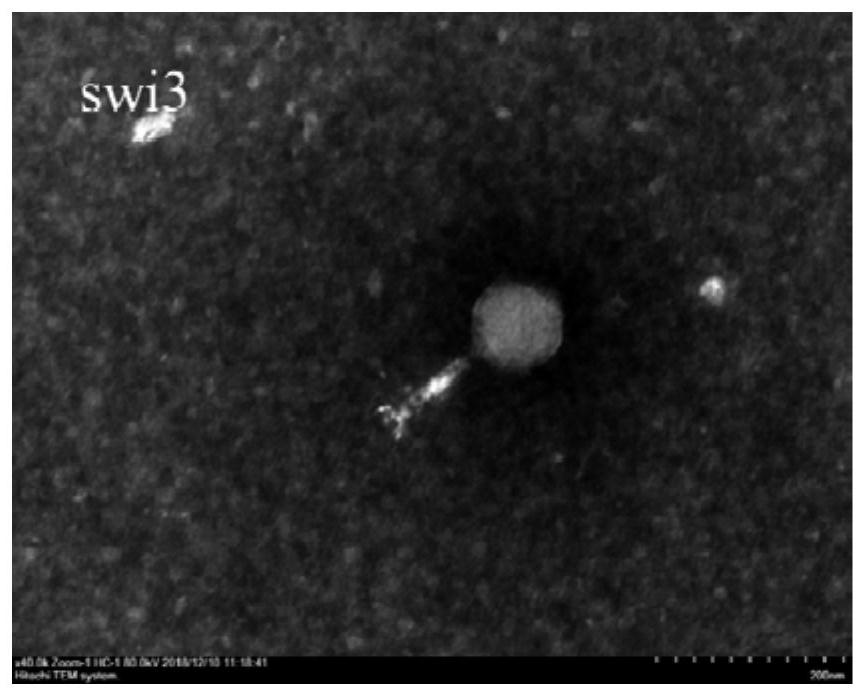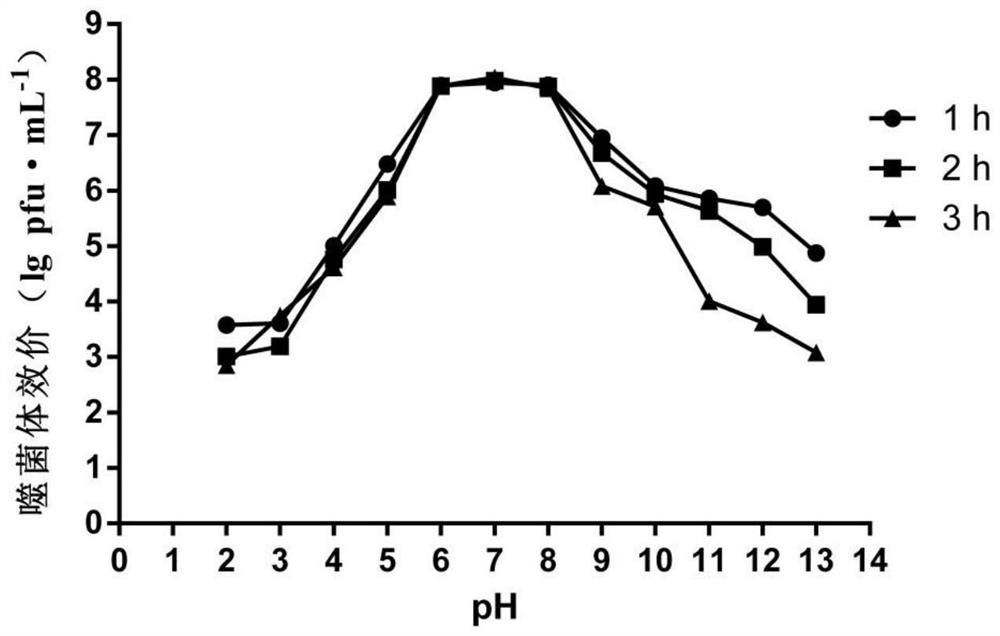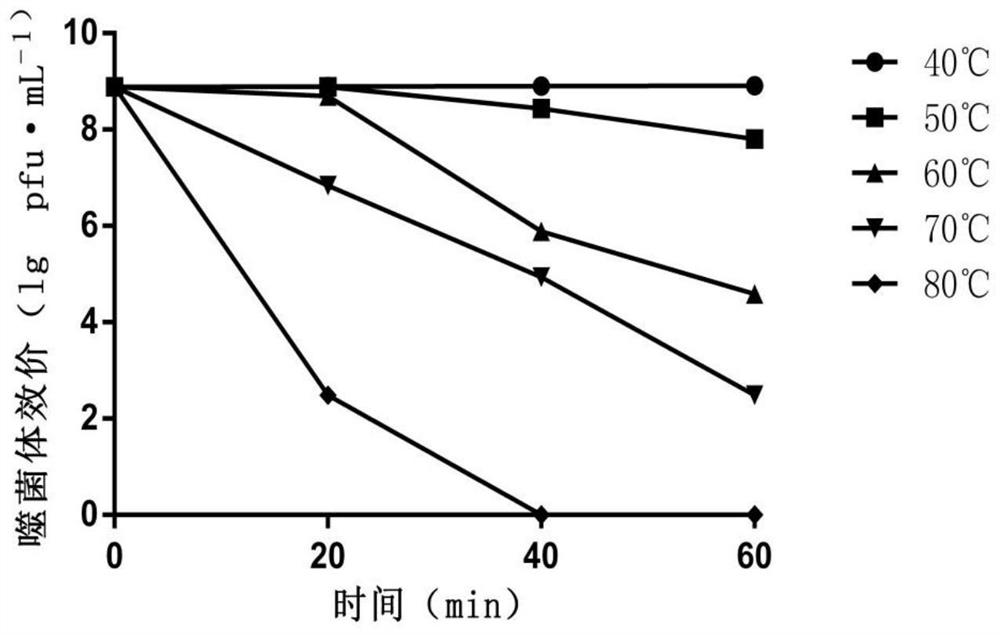Escherichia coli phage vb_ecom_swi3 and its application
A technology of Escherichia coli and bacteriophage, applied in the field of bioengineering, can solve problems such as undeveloped phage resources, and achieve the effects of good physical and chemical factor tolerance, good safety, and high lysis performance.
- Summary
- Abstract
- Description
- Claims
- Application Information
AI Technical Summary
Problems solved by technology
Method used
Image
Examples
Embodiment 1
[0044] Example 1: Isolation and preparation of Escherichia coli phage vB_EcoM_swi3
[0045] (1) Experimental materials:
[0046] Fecal sewage samples were collected from pig slaughterhouse sewage in Linyi City, Shandong Province. The phage host bacteria was E. coli-K88, which was isolated, identified and preserved from diseased pig feces by our laboratory.
[0047] (2) Experimental method:
[0048] Add 5ml of the collected sewage sample to 50ml of LB liquid medium, then add 500μL of Escherichia coli E.coli-K88 bacterial solution, mix well and put it into a 37°C constant temperature incubator for overnight cultivation. The culture was first coarsely filtered with four layers of gauze, the filtrate was centrifuged at 4000rpm for 10min, the supernatant was centrifuged at 12000rpm for 15min, and then the supernatant was filtered with a 0.22μm filter to obtain the phage stock solution. Spread 200 μL of Escherichia coli E.coli-K88 proliferation solution evenly on the surface of LB...
Embodiment 2
[0049] Example 2: Purification and Mass Propagation of Escherichia coli Phage vB_EcoM_swi3
[0050] Q1. Purification of coliphage vB_EcoM_swi3
[0051] Purify the samples identified to contain phages in the above Example 1. The specific operation is as follows: Take 100 μL of the phage stock solution and perform a 10-fold dilution. Take 100 μL of the phage stock solution at each dilution and mix it with an equal amount of overnight cultured E.coli-K88. Add 3ml of 0.7% LB semi-solid medium heated to 50°C and mix well, pour it into the upper layer of the LB agar plate, let it stand for 5 minutes, wait for it to solidify, and culture it upside down at 37°C for 4-5 hours to obtain the formation of phage plaques double-layer flat panel. Pick out a single phage plaque, add 3ml of LB liquid medium, bathe in 40°C water for 30min, centrifuge at 12000rpm for 5min, take the supernatant and filter it with a 0.22μm filter to obtain the phage filtrate. Take 100 μL of phage filtrate and di...
Embodiment 3
[0056] Example 3: Morphological Observation by Transmission Electron Microscopy of Escherichia coli Phage vB_EcoM_swi3
[0057] Take 20 μL of the purified phage proliferation solution and drop it on the copper grid, let it stand for about 15 minutes, and absorb the excess liquid with filter paper. Add 15 μL of 2% phosphotungstic acid (PTA) dropwise on the copper mesh for 5 minutes, absorb excess dye solution with filter paper, and observe with a transmission electron microscope after drying.
[0058] The transmission electron microscope results of coliphage vB_EcoM_swi3 are as follows figure 1 As shown, the coli phage vB_EcoM_swi3 has an obvious regular polyhedral head structure and a stretchable tail structure. The diameter of the head is about 80 nm, and the length of the tail is about 120 nm. According to the "Classification of Viruses-The Tenth Report of the International Committee on Taxonomy of Viruses" published by the International Committee on Taxonomy of Viruses (IC...
PUM
| Property | Measurement | Unit |
|---|---|---|
| diameter | aaaaa | aaaaa |
| diameter | aaaaa | aaaaa |
| diameter | aaaaa | aaaaa |
Abstract
Description
Claims
Application Information
 Login to View More
Login to View More - R&D
- Intellectual Property
- Life Sciences
- Materials
- Tech Scout
- Unparalleled Data Quality
- Higher Quality Content
- 60% Fewer Hallucinations
Browse by: Latest US Patents, China's latest patents, Technical Efficacy Thesaurus, Application Domain, Technology Topic, Popular Technical Reports.
© 2025 PatSnap. All rights reserved.Legal|Privacy policy|Modern Slavery Act Transparency Statement|Sitemap|About US| Contact US: help@patsnap.com



